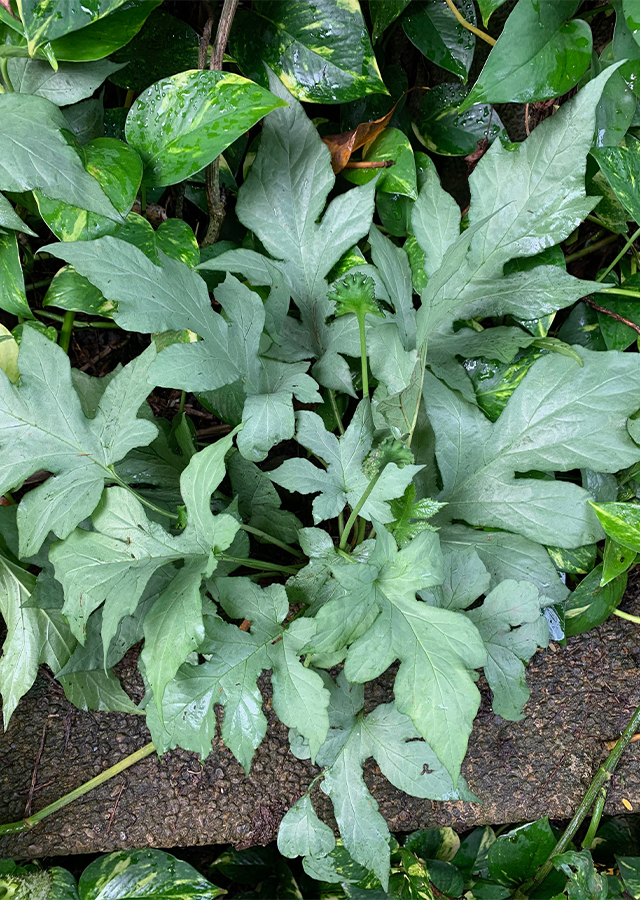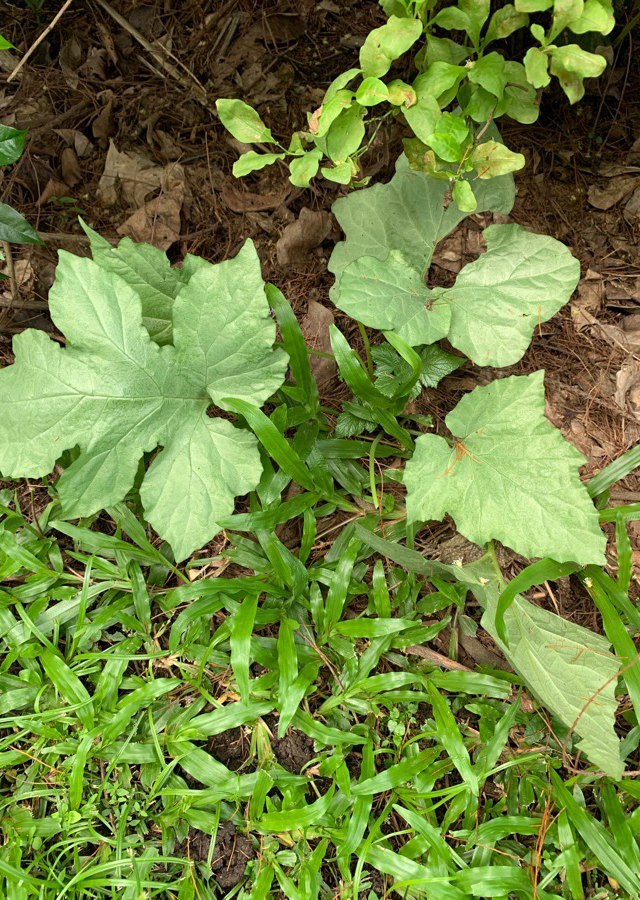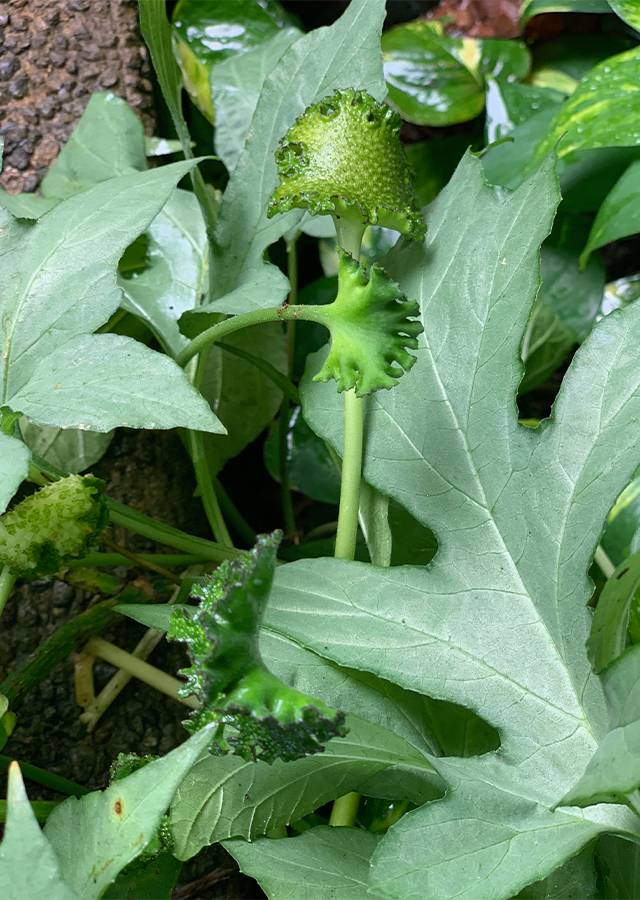Snakewort
Dorstenia contrajerva L.
Moraceae
Location in our garden
Orchard



Synonym
Dorstenia alexiteria L.
Dorstenia contrajerva var. maculata (Verschaff.) Bureau
Dorstenia contrajerva subsp. tenuiloba S.F.Blake
Habitus
Herbaceous. A small evergreen perennial plant with a creeping rhizome with a height of 30 cm
Part Used
Leaves
Roots
Twigs
Growing Requirements
Need Shade
Habitat
Forest
Shrublands
Overview
Snakewort is native to Mexico, Peru and other Latin American countries. The name derives from a Spanish word which means “antidote”, or ”counterpoison”, and was really employed as an antidote to bites of snakes. The root is often gathered from the wild and used medicinally. The plant is also abundantly cultivated for its medicinal uses in Indonesia and Malaysia, and locally in Africa and South America.
Vernacular Names
Bezoarwurz (German), Besoarrot (Swedish), Contrayerba (Spanish), Herba chapeau (French), U’shbat at-tiryaq (Arabic).
Agroecology
This plant can be found in moist forest or thickets, ascending from sea level to about 1,800 m. It prefers a moist, humus-rich, fertile soil. Sun Exposure is light shade, and partial to full shade. Soil pH requirements: 5.6 to 6.0 (acidic) and 6.1 to 6.5 (mildly acidic).
Morphology
- Roots - oblong, up to 8 cm, brown externally and white inside, rough, hard, fibrous and knotty. It is slight aromatic odor, resembling a fragrance of fig leaves. It would be warm, pungent and bitter tasted, with creeping rhizome from which emerges a rosette of leaves with long petioles.
- Stems - up to 25 cm long, round, rough, simple, and each supports an irregular quadrangular receptacle.
- Leaves - up to 20 cm long, palmate, various shaped, the lobes lanceolate, acuminate,coarsely serrated and gashed, and occasionally almost pinnatifid.
- Flowers - distinctly male and female, immersed in the common receptacle, and occupying the whole of its disc, the former consisted but of two slender short filaments, with yellow antherae.
- Seeds - roundish germen, supporting a simple style, terminated by an obtuse stigma.
Cultivation
- By seeds - germinates well at a temperature of 16-21 °C.
- By division and cuttings.
Chemical Constituents
- Saponins, dorsjervin A, dorsjervin B, psoralen, dorstenin, squalene, sitosterols, cycloartocarpesin, linolenoyl, bergapten, dorsteniol, xanthoarnol.
- Compounds from Dorstenia contrajerva: dorsjervin A and B, psoralen, dorstenin, squalene, y-sitosterol, cycloartocarpesin, bergapten, dorsteniol, xanthoarnol and others.
Traditional Medicinal Uses
Medicinal Uses
- The root contains an antidote, and is also used as a febrifuge.
- It is a good stimulant, tonic, and a diaphoretic, and is sometimes given in exanthematous diseases, typhus fever.
Traditional Uses
- The plant is a common household remedy for dysentery and is also employed in treating bites of poisonous animals of all kinds, and to increase endurance (stamina).


